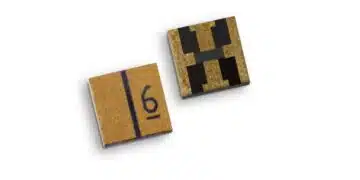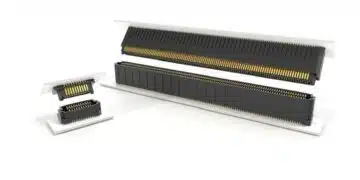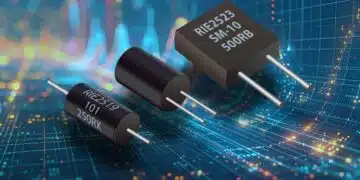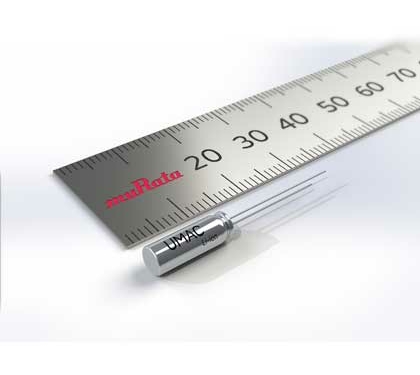source: electropages blog
Feb 18 2016 by Adam Chidley Avnet/Abacus
Often the unsung heroes of electronic design, passive components are present in every piece of electronic equipment from consumer electronics to electric vehicles to spacecraft. Though not often lauded as ‘game-changing’ like semiconductor devices, passive component technology continues to advance as new materials and devices emerge. Here we take a look at some of the most interesting developments in the field of passive components that are supporting the Internet of Things (IoT) as it evolves.
Measuring vital signs without contact
One of the IoT’s most important applications is in medical electronics where small sensors collect data about patients and their lifestyles and communicate this data, or an analysis of it, to doctors.
A new technology can measure a patient’s heartbeat without touching them, using a technique called ballistocardiography. This technique uses extremely sensitive MEMS sensors to detect movements caused by the blood pumping around the body. For example, the recoil of a hospital bed caused by a patient’s heartbeat, though it’s imperceptible to humans, can be measured with a very sensitive MEMS accelerometer. A specially programmed microcontroller can extract the heartbeat data from the accelerometer signal. This new sensor technology could be used simply to ascertain bed occupancy, or to monitor the occupant’s heart rate and heart rate variability, respiration rate and more.
Charging devices without wires
One of the benefits of having the ability to communicate wirelessly is being mobile and avoiding the need to plug in. The efficiency of wireless charging depends largely on the quality of the charging coils – these are passive devices which act as the interface between the device and the charger. A new technique from Vishay involves making the coils from powdered iron so they aren’t affected by the permanent magnets often used as locating magnets. It also shields the charging flux from sensitive components in the design. The alternative, ferrite solutions, can saturate in the presence of a strong magnetic field, whereas the new coils offer a magnetic saturation of <50% at 4000 gauss.
Matching wireless devices
Incorporating RF and communications sub-systems into devices that couldn’t previously communicate means that all embedded engineers are now expected to have specialist knowledge of wireless design. Of course, most don’t, so to help simplify adding RF ICs to projects, passive component makers are doing their best to simplify the surrounding circuitry.
One example of this is the rise in popularity of matching devices; small passives with very specific impedance intended to exactly match the impedance of individual loads for RF impedance matching purposes. Using matching devices drastically simplifies RF circuit designs, and they also help reduce component count and footprint as they replace several discrete passive components. Many different models are available to match various popular RF ICs.
Energy storage for energy harvesting
The smallest IoT sensor nodes will be powered by energy harvesting, perhaps collecting energy from the sun or the movement of the sensor node and using it to transmit data to the network periodically. In between collecting and using energy, it must be stored.
Storing energy in small sensor nodes requires a new type of storage device, which is small enough not to compromise the design. These energy storage devices need to withstand load fluctuations, charge and discharge fast, and have sufficient lifetime, while increasing capacity and decreasing footprint and internal resistance. A tall order!
Passive component manufacturers have therefore been working on adapting capacitor technology to meet these requirements. The latest devices offer small volumes and large capacities but with faster charging and discharging. For example, the Murata device pictured limits its leakage current to a few hundred nano-Amps, so that it may be charged by very small currents such as energy harvesting signals.
Protecting devices from their users
One of the unsung heroes of the passives world is the ESD protection device, which protects electronic products from electrostatic discharge (ESD). Voltage spikes of thousands of volts can be created by something as simple as the user walking on a carpet and then touching a conductive part of the electronic device, such as a USB port connector or an antenna.
Obviously, for IoT devices such as wearables, which are intended to be touched and handled, this is a significant problem. Every exposed conductive part of the device needs to be protected against ESD.
Ceramic ESD protection devices use the gap between two electrodes as a discharge element. Manufacturers of these devices are seeking to reduce the size and footprint of these devices to support the design of wearables and other compact devices, but bringing the electrodes closer together means the devices’ dielectric strength is compromised. Innovations in ceramic technology have vastly improved the materials’ dielectric properties so they can be made smaller, and can even withstand repeated high voltage discharge events. The latest devices rival transient voltage suppression devices in performance, but with the added advantage of tiny packaging and very low capacitance.































